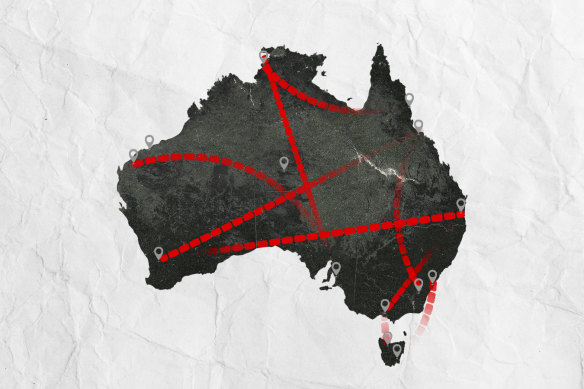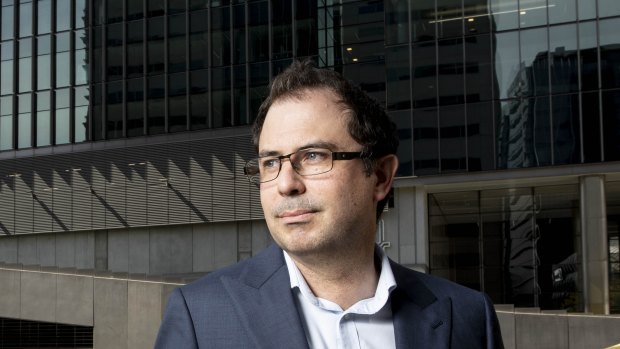- Exclusive
- Politics
- Federal
- Immigration
Fewer people are moving interstate. They can’t afford to
By Shane Wright
High house prices have exacerbated a slowdown in the number of people moving interstate for work and lifestyle, with new figures showing an end to the exodus of residents out of Victoria, the dimming of Queensland as the nation’s go-to state while NSW is relying on immigrants to prevent de-populating.
Treasurer Jim Chalmers concedes the government won’t hit its forecast of net overseas migration. Data from the Australian Bureau of Statistics reveals the turmoil caused by COVID border restrictions and the rising cost of housing and interest rates means fewer people are prepared to relocate.

The great interstate migration is disappearing.Credit: Aresna Villanueva
In the years before COVID, about 450,000 Australians annually moved to a new state or territory. This collapsed as many state governments barred interstate travel or made it difficult to take up residency.
Moves rebounded as the barriers came down, but the latest national population figures show fewer than 370,000 people shifted interstate in the 12 months to the end of March. It was the lowest annual move, outside of COVID, since 2015, when the country was home to 23.8 million people.
Australia’s population reached 27.1 million in the first three months of this year.
During COVID, Victoria suffered its biggest loss of residents to other parts of the country since the 1990-91 recession. In net terms, more than 55,000 people left the state.
In 2021-22, a record 51,000 people departed NSW for other parts of the country.
Many of those ended up in Queensland, which sucked in almost 120,000 people from the rest of the country, while Western Australia took in 33,526 interstate residents.
But those COVID-era trends have been reversed. In the 12 months to March, Victoria’s interstate migration turned positive, Queensland and WA had their smallest intake since the start of COVID and NSW’s loss of residents is down almost 20,000 on 2021-22.
KPMG director of demographics and urban economics Terry Rawnsley said it appeared one of the main reasons people were not moving as much was the cost of housing.
During COVID, house prices went through their largest increase in a generation. House values in Sydney alone rose by almost 30 per cent between mid-2020 and mid-2021, while Melbourne values climbed almost 20 per cent even as both cities lost residents to other parts of the country.
Sydney’s median house value is now a record $1.5 million – more than $500,000 above Canberra, the second-cheapest capital in the country. The median value of a Sydney unit is $859,000 compared with $653,000 in Brisbane and $610,000 in Melbourne.
“People’s movements are certainly stickier, and that would be related to housing prices – more expensive housing across the country keeps people in the same place for longer,” Rawnsley said.
“I think housing affordability would still be a driving factor for the departure from NSW, and those white-collar jobs in Melbourne, Brisbane and Perth would be a draw for the Sydneysiders.
“For a while there, Queensland and WA had stronger labour markets and cheaper housing than Victoria. The labour markets looked to have balanced out and now housing in Victoria is looking pretty cheap compared to the other two states.”
If not for overseas migration, NSW – where there was a natural population increase of 30,776 compared to a 31,183 loss to other states – would have depopulated.
South Australia and Tasmania, which historically have shed residents to other parts of the country, enjoyed a surge of people moving into their states during COVID, with both taking in more than 5300 each through interstate migration.
That has turned. South Australia lost almost 1700 people to other states and territories through the past 12 months while Tasmania has lost 4854 over the past two years.

KPMG economist Terry Rawnsley says house prices have been a key factor in changing interstate movements.Credit: Arsineh Houspian
Rawnsley said Tasmania and South Australia would continue to struggle to woo residents from other states.
The same data shows a net 388,000 overseas migrants moved into the country in the first nine months of 2023-24 – almost hitting the government’s 12-month forecast for 395,000 people.
The government has promised to halve migration in two years from a record high of 528,000 in 2022-23, when borders reopened after the pandemic, to 260,000 by 2024-25. The Coalition has pledged to drive that down to 160,000, alarming business owners who fear worker shortages.
Treasurer Jim Chalmers on Sunday said net overseas migration was still high because fewer-than-expected people were leaving the country.
“When it comes to arrivals, we’re more or less tracking as we expected but when it comes to departures, that’s been the big difference and that’s why there’s likely to be a revision to those net overseas migration forecasts because of those fewer departures,” he told Sky News.
Start the day with a summary of the day’s most important and interesting stories, analysis and insights. Sign up for our Morning Edition newsletter.